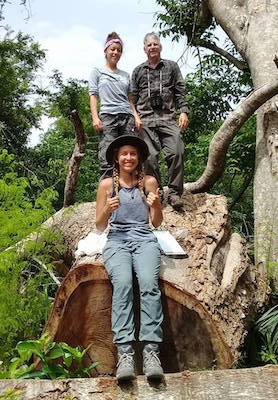
Iris Lopez and Brianna Jancuska accompanied Dr. Evan Zucker to Ranchería Josefa Ortiz de Dominquez located near the town of Balancán, Tabasco, in southeastern México, on the banks of the Usumacinta River, for a 3-week study of black howling monkeys during July 2017. There, one group of monkeys, containing one adult male, three adult females, one juvenile female, and one infant male, was observed. This group inhabited a forest fragment about 1.5 miles from the field station where the researchers lived, so walking at least 6 miles per day was typical. Each adult female in the group was the subject of focal animal sampling by one observer, studied with the purpose of determining dominance (status) relationships among the females. In addition, urine samples from these monkeys were obtained, and assessed for 10 different chemical parameters indicative of general health status. The researchers were attempting to determine if there were differences in these indices of health as a function of status. They spent approximately 50 hours directly observing this group of monkeys over 15 different days. While the social interaction and urinalysis data have not yet been analyzed, they were privy to some interesting howler behaviors, such as monkeys drinking from an arboreal water hole (two different occasions) and a 5-monkey play bout that lasted approximately 40 minutes until abruptly stopped by the arrival of the adult male of the group. Students learned about howler (and other nonhuman primate) behavior, ecology, and physiology, in addition to living amongst iguanas, other lizards, and insects, particularly mosquitos! The complexity of howler social interactions was a common discussion theme, as were human and nonhuman primate similarities.
